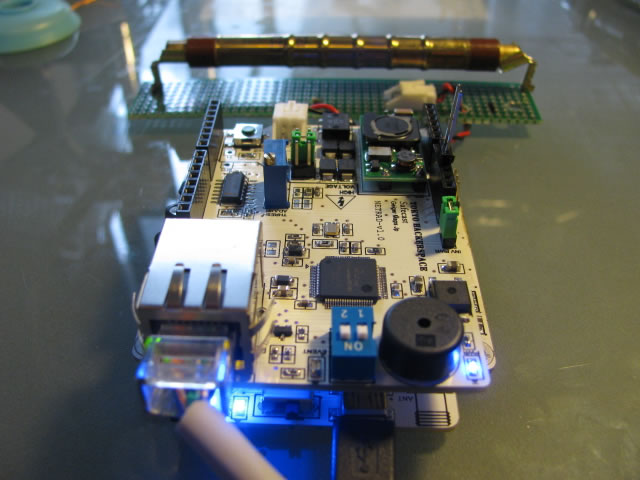
This is an Arduino-based Geiger Counter Shield that makes easy to upload data to the internet and also interchange Geiger Tubes.

This product is made to cope with the radiation problem in Japan.
Because the radiation problem in Japan has proliferated internationally, Hackerspace in Tokyo made and provides this products to Reuseum.
This product is a shield based on Arduino.
This shield has W5100 TCP/IP Ethernet solution chip and utilize the Pachube web service.
It also has a HV circuit (FL2810-1L CCFL) transformer and this transformer is in need to use the Geiger Tube.
Geiger Tube is a necessary tools for measuring actual radiation. Refer to the detailed explanation below.
PARTS
1. HV circuit (FL2810-1L CCFLtransformer) – CCFL inverter Description
2. W5100 TCP/IP Ethernet Chip
3. Geiger Tube
4. Arduino Uno
The following picture is the configuration block diagram of Geiger Shield.
p.s SBM-20 and LND-712 Geiger Tubes Description
A Geiger–Müller tube consists of a tube filled with a low-pressure (~0.1 Atm) inert gas such as helium, neon or argon (usually neon), in some cases in a Penning mixture, and an organic vapor or a halogen gas. The tube contains electrodes, between which there is a potential difference of several hundred volts (~500V), but no current flowing. The walls of the tube are either entirely metal or have their inside surface coated with a conductor to form the cathode while the anode is a wire passing up the center of the tube.
When ionizing radiation passes through the tube, some of the gas molecules are ionized , creating positively charged ions, and electrons. The strong electric field created by the tube’s electrodes accelerates the ions towards the cathode and the electrons towards the anode. The ion pairs gain sufficient energy to ionize further gas molecules through collisions on the way, creating an avalanche of charged particles.
This results in a short, intense pulse of current which passes (or cascades) from the negative electrode to the positive electrode and is measured or counted.
Source
Schematic : http://www.tokyohackerspace.org/misc/akiba/geiger/THS_geiger_shield_RC_1.0a.pdf
http://www.tokyohackerspace.org/en/blog/tokyo-hackerspacerdtn-geiger-shield-dev-history
Refer to this URL for the detailed explanation ; https://www.cooking-hacks.com/documentation/tutorials/geiger-counter-radiation-sensor-board-arduino-raspberry-pi-tutorial




COMMENTS